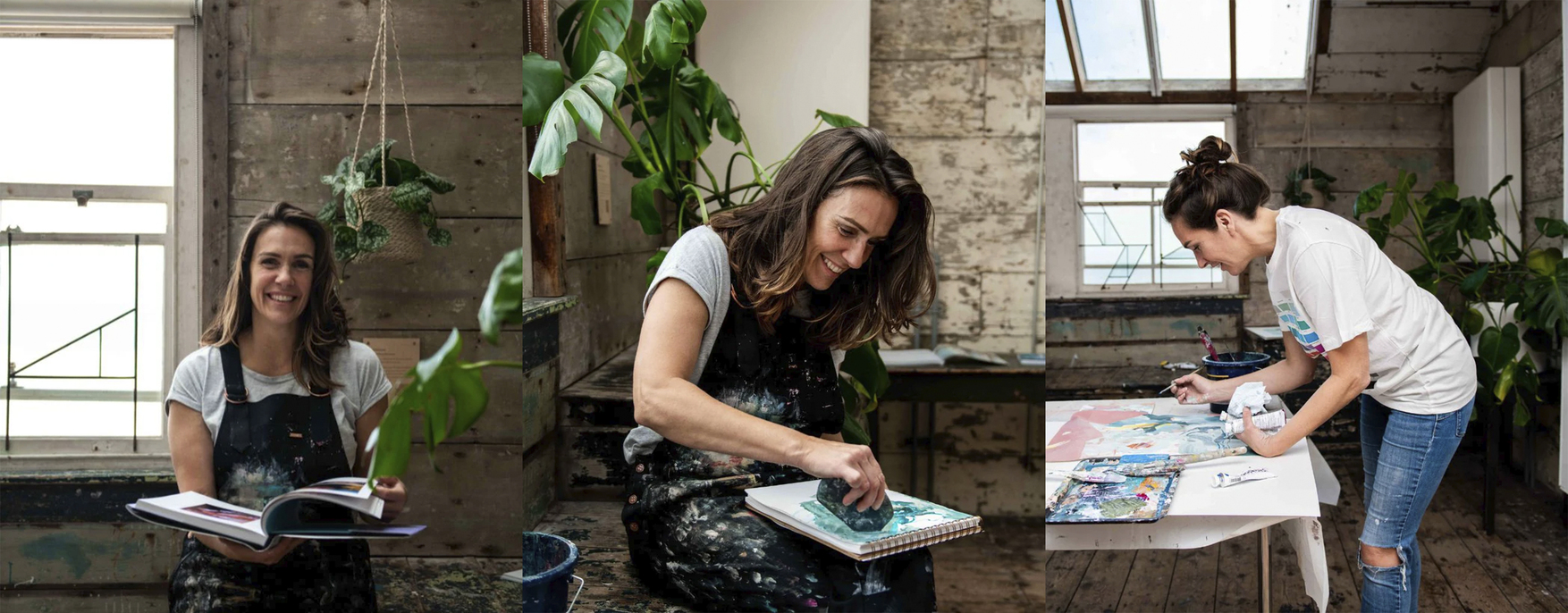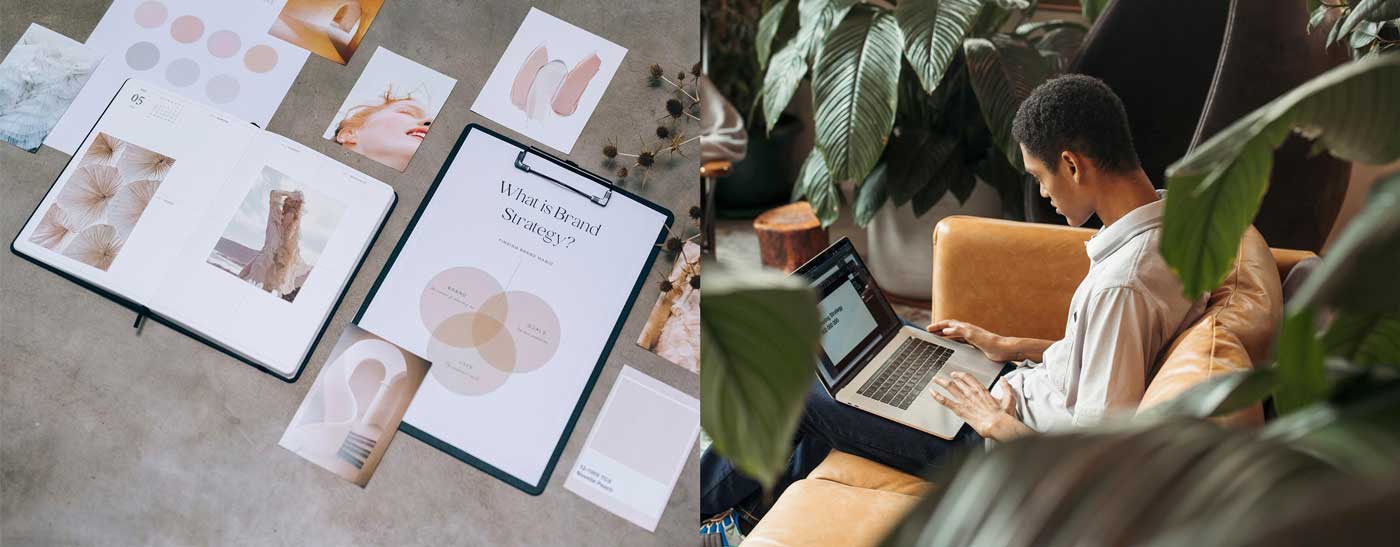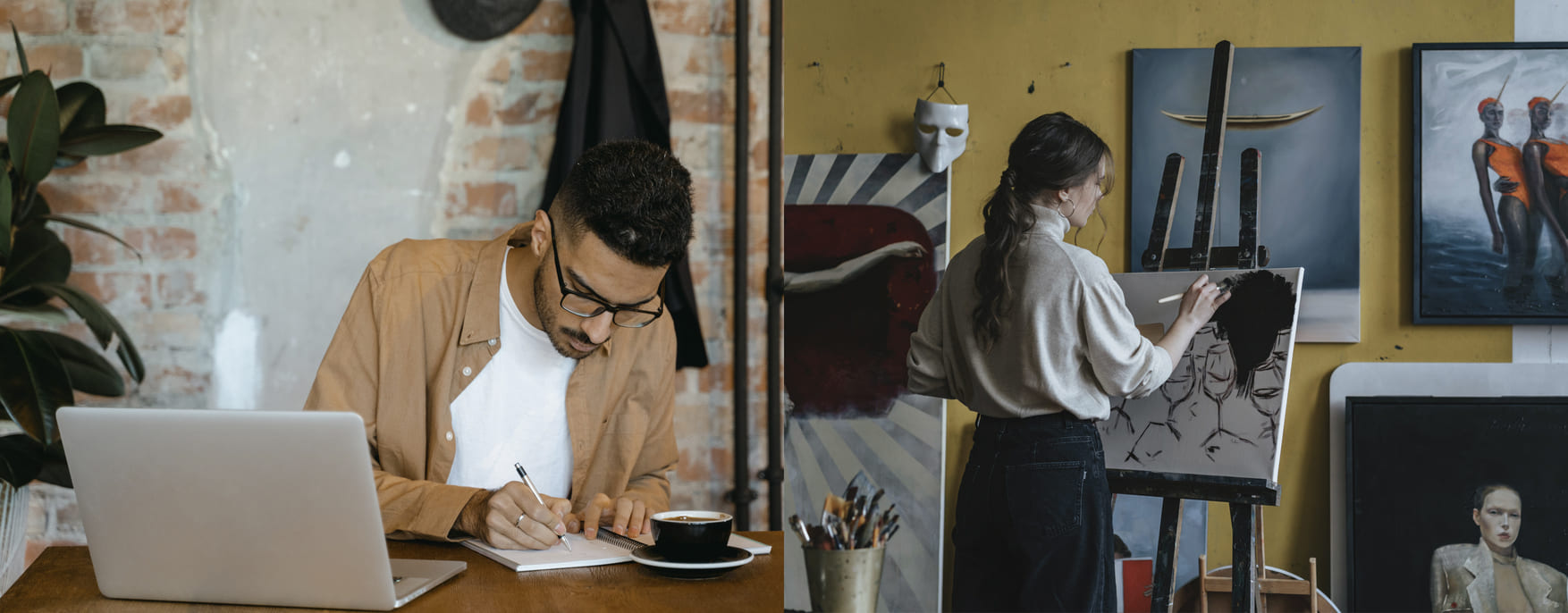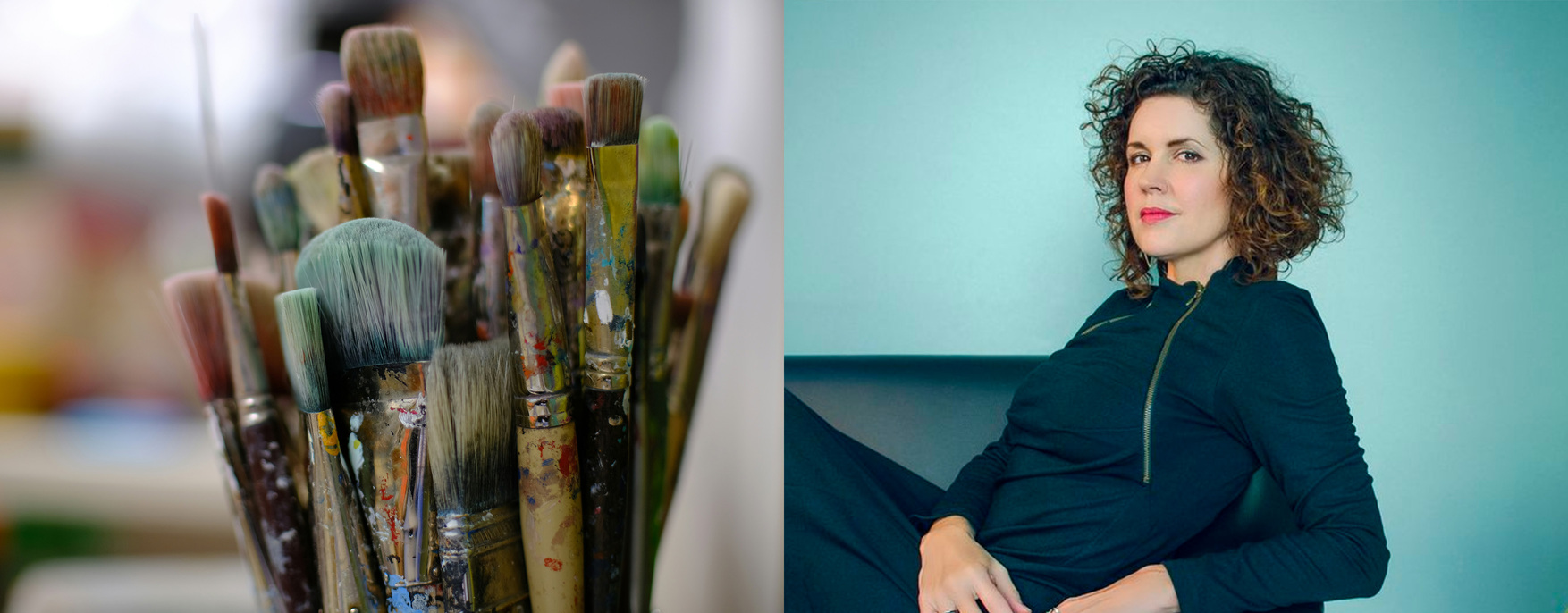Amanda Heath is an artist and certified business mentor who has helped many other creators set the pillars for a successful art practice that is profitable and allows them to explore their artistic impulses with freedom.
This business and artistic philosophy drove her to create “Thriving Artists Business School (TABS)”, an online business school where creators learn how art and business intersect to empower themself and take control not only of their careers but also their financial stability.
In this exclusive interview for ArtPlacer, Amanda Heath sat down to talk about what are the business and marketing aspects every artist should know to monetize their craft, and even how to find that sweet spot of balance between profitability and creativity.
Keep reading to learn how this business perspective can boost your artistic journey.
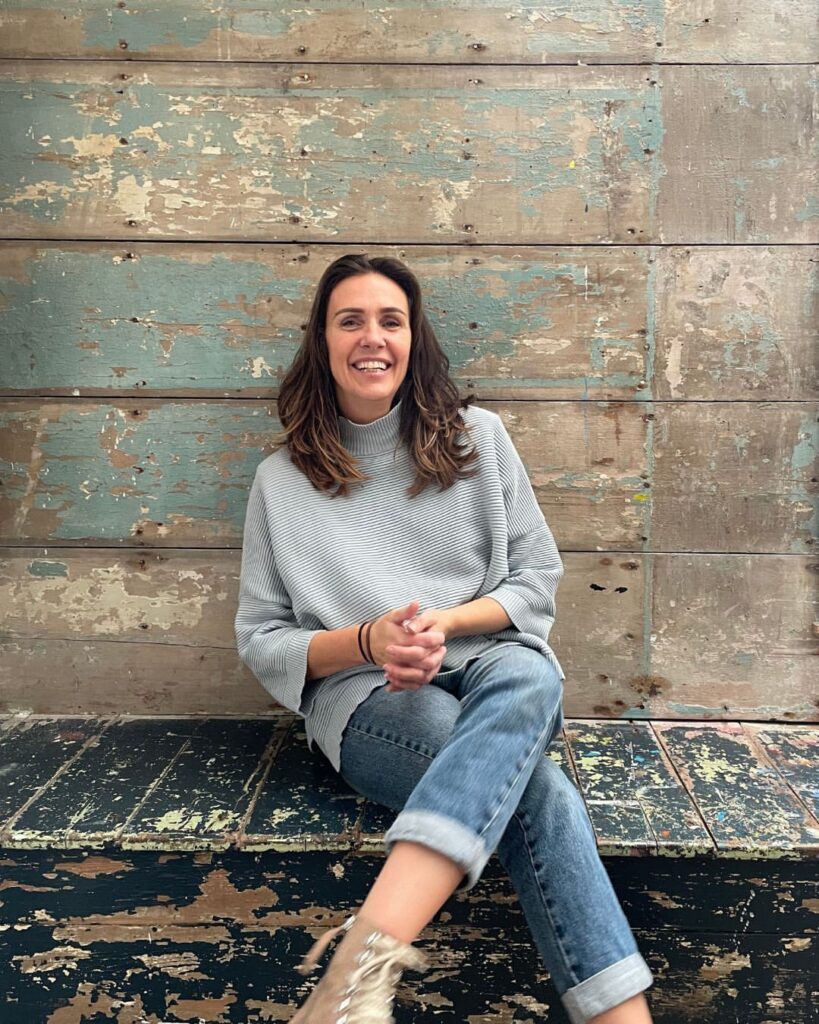
Amanda Heath is the creator of “Thriving Artists Business School (TABS)” a business-centered learning space for artists where they can master how to create successful and profitable art practices.
Why do you believe it’s essential for artists to educate themselves about the business aspects of their craft?
This is a real passion point for me. Traditionally it’s been the view that artists should not think commercially and that they should leave it up to galleries to do the selling. That is fine for artists who have no interest in marketing their own work, for them, galleries play a really important role. Some people are just not cut out for business and want to focus 100% on making art and that’s ok.
However many other artists, for various reasons, want more control of their business, either partially or fully. They want to be able to decide what they sell, how they sell it, and when.
They are looking for more flexibility both in business and in their own creativity, as sometimes galleries can come to expect a certain style of work from an artist and it’s difficult for them to expand in a direction away from that.
For artists that fall into the latter category, it’s imperative that they understand business and how to sell, how to reach potential collectors, and how to present a cohesive body of work in a way that feels good for both parties but still leaves room to develop and how to create an enjoyable experience for their buyers.
Sadly many artists are not taught how to do this, so they enter the commercial world and struggle to make things work. It doesn’t have to be this way. With even the most basic of business training we can learn how to start selling work successfully. Selling art is no more difficult than selling any other lifestyle purchase.
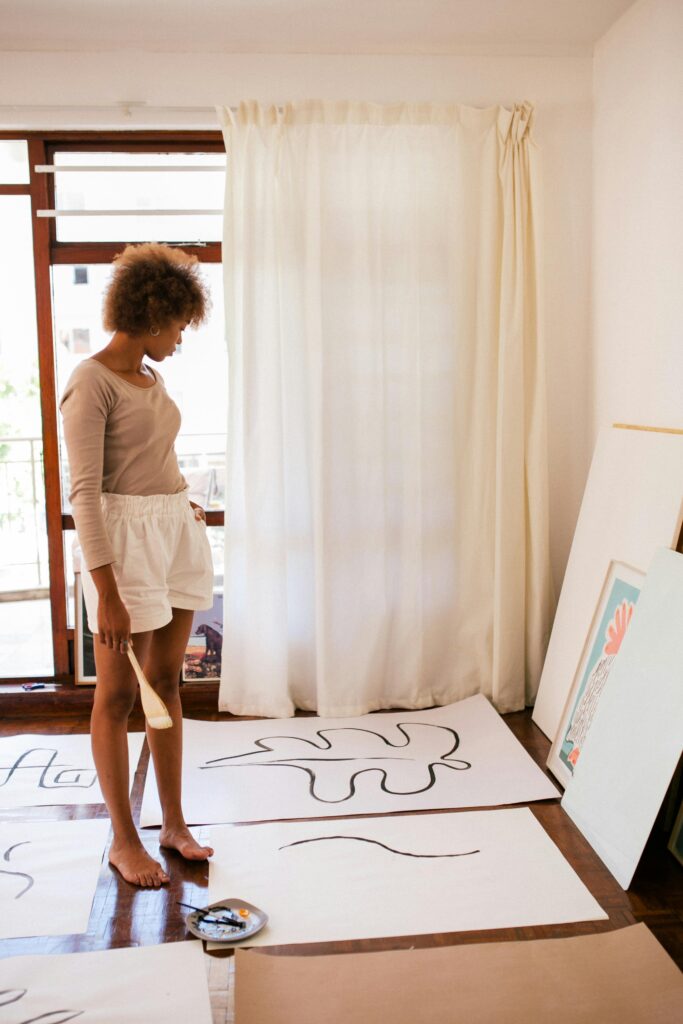
Familiarizing yourself with essential business and marketing concepts can be key to growing your art business and career.
How can understanding business concepts enhance an artist’s ability to make a profit from their passion?
If we don’t understand business the most obvious risk is that we will be selling work and not making a profit, or very little profit. Which effectively makes it a very expensive hobby!
Understanding what makes our work desirable, how it impacts our customers, what makes it unique, all inform its saleability. Understanding costs, profit margins, and multipliers are the difference between success and failure. Also, things like having different priced product offerings within a business can increase customer lifetime value and also mean that people who perhaps can’t afford an original (yet) have options to buy from you.
Of course, all this needs to be aligned with the brand positioning of the artist. So understanding business concepts is quite literally the difference between an artist with the ‘starving’ mentality who thinks there are few options open to them, and one with a growth mindset who sees opportunities and knows how to build multiple streams of income.

What makes your work unique? That’s what potential collectors need to see to make the decision to invest in it.
What specific skills or knowledge areas do you think are most crucial for artists to learn to succeed in monetizing their art?
Knowing what makes their work unique and telling the story behind the artist and their work. It’s about connecting emotionally with ideal buyers. Learning to do this will make selling SO much easier and more conversational for both parties.
Also, knowing what your art can bring to people: why do they buy it, how does it improve their life? When a customer understands and feels the impact a piece will have, their desire increases.
It goes without saying too, that knowing your numbers is critical, and lastly how to structure a marketing plan. So many artists leave things to chance rather than having a structured plan for what they plan to sell, when, how many, and through what channels. I call it the “post and hope” strategy.
In what ways does educating themselves about business empower artists to take control of their careers and financial futures?
When artists empower themselves about business, they take back their ability to make decisions about their future and how they would like it to look and feel. They don’t have to rely on third parties to sell their work. They don’t pay commission fees and they are less at risk of losing their ‘platform’.
What I mean by that is a lot of artists think that selling their work via third-party sites is easier than having their own website and doing their own marketing. Some say “I don’t need a website because I have Etsy or Instagram”. Whilst those platforms are great, you are simply renting space. Ultimately you are not in control and you can find yourself in very tricky situations without a business or an audience, e.g. if your account gets hacked.
They are great as part of an overall selling ecosystem but for me having a website and an email list are critical. They give you the freedom to launch offers, to reach your customers whenever you want, to prioritize what you want to sell and how you want to sell it.
Knowing how to sell your own work means you get to choose if you work with galleries as part of the mix, you have a mutually beneficial relationship rather than being at their mercy.
With the tools available to artists nowadays, stunning e-commerce sites, powerful email marketing systems, and tools for displaying artwork (such as ArtPlacer) it is much easier to reach customers directly and show your work in a professional light. What’s more, we can reach them all over the world so we are not reliant solely on local footfall anymore. The possibilities are endless.
Finally, understanding business enables an artist to choose where they position themselves. Do they want to sell high-end, fine art and limited edition prints having virtual exhibitions or do they want to sell lower-cost, higher volume items such as putting their art on print on demand merchandise? Understanding business opens up choices that you do not have access to if you rely on others to sell work for you and much higher levels of profitability.
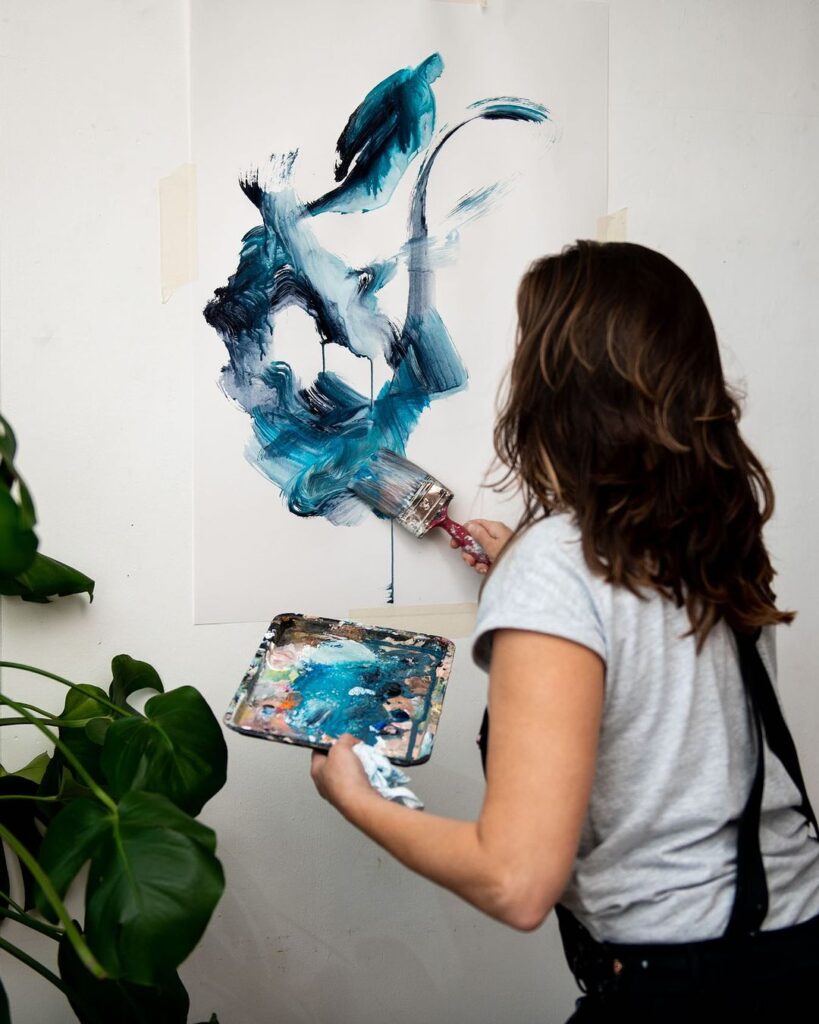
Amanda talks about finding the balance between the business aspects and the creative ones. A sweet spot that brings freedom of creation to the artist.
Is it possible to find a balance between running marketing campaigns and dedicating time to your craft? How important it is to find a balance?
This is such a tricky balance to strike for sure! It’s one I really struggled with in the early days until I found a way of automating part of the sales and marketing. The process I teach is fiddly to set up, but once it’s done, it works on behalf of the artist 24/7 – bringing new potential customers onto their list and resulting in passive print sales.
Once you have this “baseline” of passive sales that cover all your essential costs (and more!) you no longer have to trade time for money. If you only sell originals or commissions you are capped on how many hours there are in a day, the only way to make more income is to raise your prices. So that adds a lot of pressure, in that instance, you are pressured to create new work all the time and then also responsible for selling it.
If an artist has a goal of £3000/m and they sell originals for £1000, they have to create at least 3 paintings a month AND sell them. That is a lot of pressure. If you have a passive stream of prints for example, that is automated, you can sell 10 prints at £200 each which makes you £2000, now all you have to do is create and sell one original. It’s a much more relaxed way of working.
I always suggest artists try to have at least one passive income stream (prints are just one example, there are many more), that takes care of a lot of the heavy lifting when it comes to marketing, leaving you more time to create. The beauty of that system too is that it continually brings qualified leads onto your email list and once someone has purchased a print and been wowed by the service and quality, they are more likely to become a repeat customer and purchase higher value items too.
This is much less stressful than not knowing where your next customer will come from.
In answer to the last part of your question, it’s really important. Too much business drains our creativity and too much creativity and you disappear behind a sea of unsold work.

Your business plan is the framework to create the sustainable and successful art practice you dream of.
Can you provide examples of how artists who have invested in learning about the business side of art have seen tangible benefits in terms of increased income or opportunities?
There are so many. I’ve had artists learn how to present their work so professionally and so effectively that they have:
-Gone from $30 in a whole year to $9000 in one month (not the norm I may add!)
-Sell their most expensive pieces, and several of them, after struggling to sell their work for less, once they understood how to talk about their work and present it
-Sell out of collection releases in under 24hrs
-Sell out 2 retreats in 48hrs
-Win business awards
-Get press coverage
-Increase their following from 2500 to over 100,000 on Instagram, resulting in a huge number of national and international sales
-Go from relying solely on selling via galleries to being able to a combination of galleries and sales through their own website.
And lots who have been able to leave their jobs and focus on art full-time
What are some common misconceptions that artists may have about the business and marketing side of the art world?
That it somehow devalues the work of the artist. This frustrates me to no end. Done badly, yes it will. But done well it elevates it and opens the artist up to an international audience.
They also think it’s something they can do or can’t do, that some people are born with an innate ability to market themselves and others will never be able to. This is also simply not true. No one is born knowing how to drive. We have lessons, we practice and over time it gets easier. It’s exactly the same with business and marketing, it’s a skill we get to develop and refine and it’s SO much fun, especially when you start to see results.
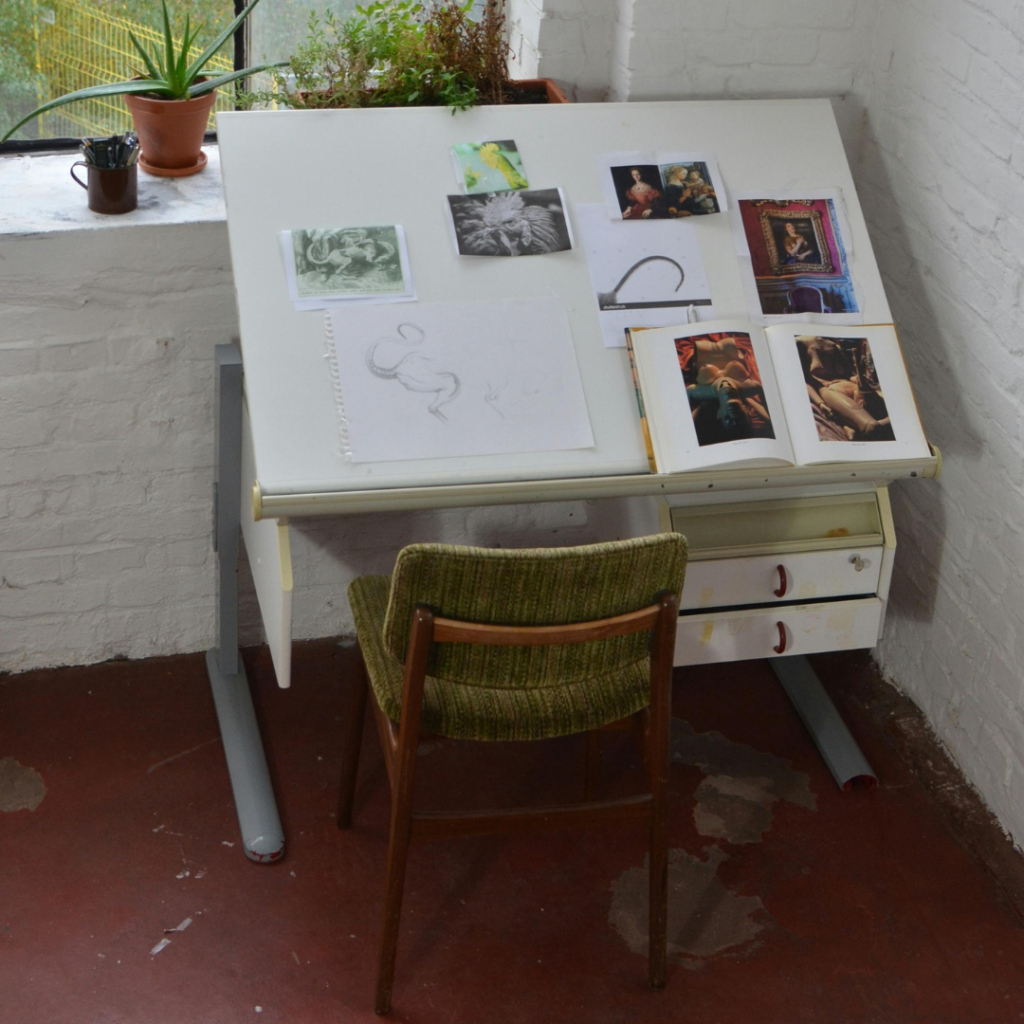
Building a sustainable art practice is a matter of balancing two aspects: the creative and the business one.
How do you balance the creative aspect of art with the practicalities of running a profitable business? Is it possible to find a balance?
For me personally, in the early days, it was hard. I still had my old business and only sold that in June 2021 so that I could focus fully on building my art business. There is always a period when it’s all down to you, and it’s tough, you’re wearing all the hats – marketing, accounting, creator, admin, etc. You are not quite big enough to hire a team yet, but the work is increasing, word is getting out about your services, and demands on your time are high.
For the artists I work with, I think it’s vital that the business side doesn’t overwhelm the creative side otherwise it can impact energy and ultimately the work. So it’s about getting clear on which actions really move the needle and which are nice to have, then splitting up the week into chunks, with around 30-50% max dedicated to the business side and the remainder to creating. Then, when things start to gain momentum, look at areas in your business that are taking time and are repetitive tasks and outsource those ASAP.
What advice do you have for artists who may feel overwhelmed or intimidated by the idea of delving into creating a business plan for their art practice?
It’s like any new skill, it’s daunting at first but once you start understanding bits and pieces it all starts falling into place. Start with how you want your business to look and feel, get a really strong vision, and make sure it’s your vision, not what someone else thinks you should have/be/do.
Then reverse engineer it. Decide how you want to work, where you want to work, and ultimately the type of work you want to create. Next, break it down into bite-sized pieces e.g.: “I want to sell mostly prints so that I am free to travel the world. So I’ll need a website, a way of scanning my work, etc”. Then when you have all the various elements of the business identified, decide what order they have to be done in.
Effectively your business plan is as simple as that. It doesn’t have to be 40 pages. It has to be a working document with well-thought-out financials that is a living document – one that you can use to stay on track but also measure your progress.
A business plan should be exciting and give you goosebumps. If it doesn’t you’re not reaching high enough.
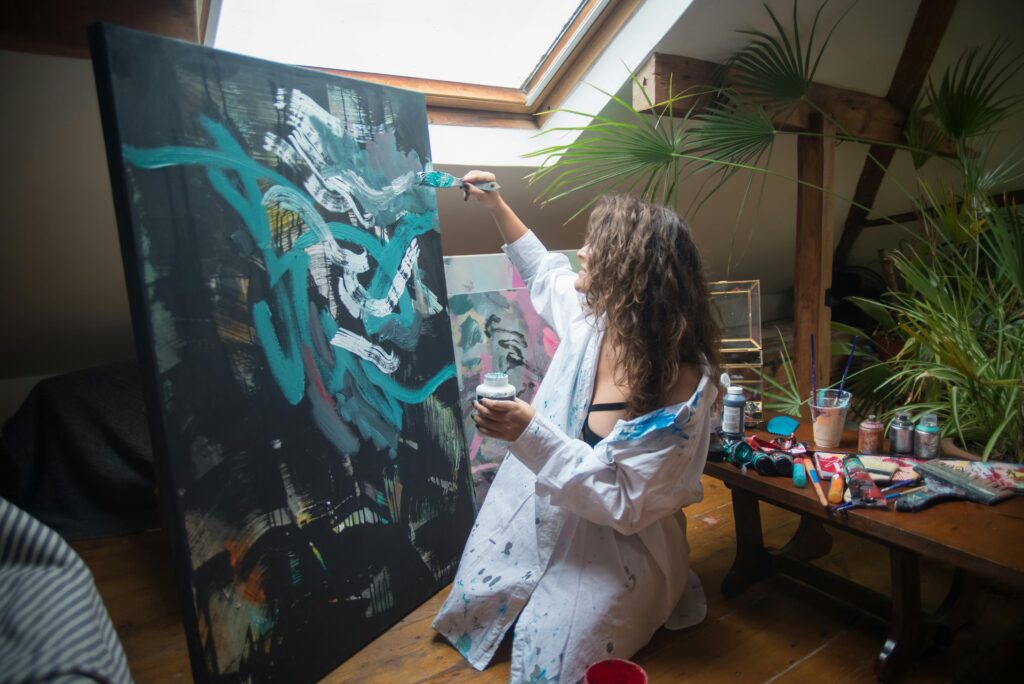
Art businesses are in constant evolution and that ever-changing nature is what can help artists thrive.
In your experience and opinion, what makes a good art business?
On the business side, having multiple streams of income so that if one dips the others can still support you financially is always a good idea.
On top of that, a business that makes you jump out of bed in the morning because it’s exciting and it’s so aligned with what you were put on earth to do that it doesn’t feel like work. That’s the biggest key for me because that passion will fuel continuous improvement!
It has to be profitable, it has to be enjoyable and it should enhance your life rather than take over it. Last but not least, there should be room within your business to play!
Learn more about Amanda Heath’s at “Thriving Artists Business School (TABS)”. Discover her new workshop on how artists can automate sales in their own businesses to reach more buyers and create a passive income stream.
Editor’s note: this interview has been edited for length and clarity.
